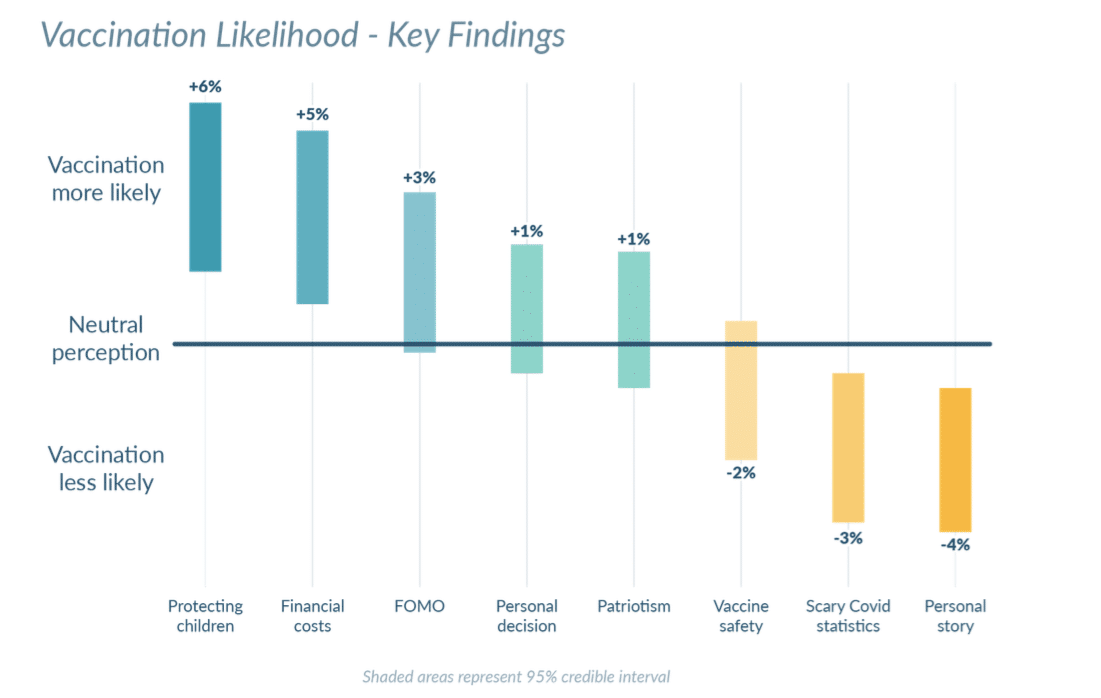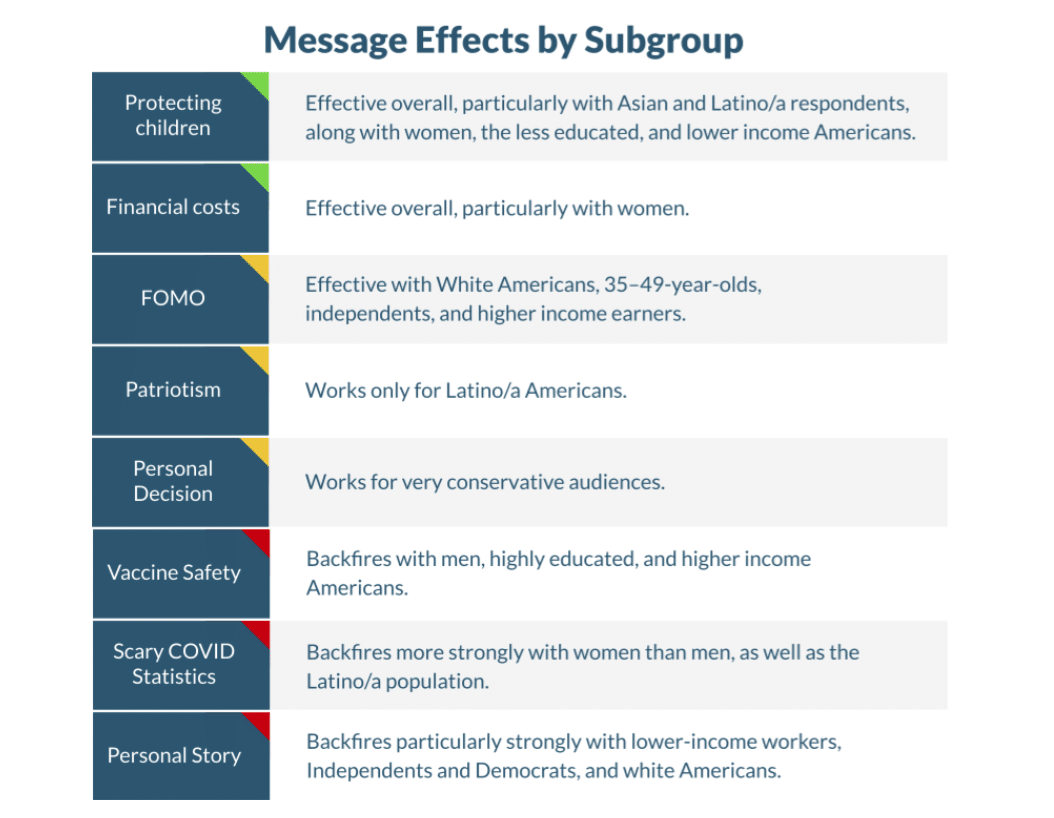Many Americans remain unconvinced that they need to get vaccinated against COVID-19, despite a variety of tactics and directions from which the issue is approached. Which approaches are resonating most—and which are falling flat? New research from data-driven audience insights firm Civis Analytics identifies the most persuasive vaccine messaging, the latest in a series of Civis studies on the topic.
The new study of 5,110 unvaccinated American adults showed that the most persuasive pro-vaccination messages focus on protecting children from COVID-19 and on the financial cost of contracting the virus. The research also showed increasing variation in persuasion effects among demographic groups compared to prior studies, further emphasizing that a “one-size-fits-all” message will not work.
Civis ran the message test using its Creative Focus tool, which leverages a randomized controlled trial framework to determine which messages are persuasive—and which may backfire.
The study examined the effect of messaging with the following persuasive approaches:
- “Vaccine Safety” highlighted the safety of the COVID-19 vaccines: the rigorous FDA process that was followed, the diversity of clinical trial participants, and the rarity of serious side effects.
- “FOMO” emphasized experiences that may be off-limits to non-vaccinated individuals, such as concerts and international travel.
- “Scary Statistics” emphasized how unvaccinated individuals are at a significantly higher risk of hospitalization and prolonged symptoms, and reinforced that vaccines provide near-total protection against severe illness and death.
- “Personal Story” used language from a doctor’s post about patients on their deathbed begging for the vaccine.
- “Patriotism” positioned the vaccines as an example of American ingenuity, trumpeting vaccination as the ultimate expression of freedom, liberty, and country.
- “Personal Decision” emphasized that it’s normal to have questions about the vaccine, encouraged learning more, and positioned vaccination as a person’s individual choice.
- “Protecting Children” shared the record rate at which children are hospitalized with COVID-19, and positioned the vaccine as a way to block transmission to children.
- “Financial Costs” reinforced that a severe case of COVID-19 is expensive.
Key findings include:
As the COVID-19 situation has changed, so too have the most persuasive messages
In the latest research, messages highlighting experiences off-limits to unvaccinated individuals (such as concerts or international travel) or emphasizing personal choice were much less persuasive than in April 2021, when research conducted with Made to Save found those messages to be highly impactful across most demographic subgroups.
Persuasion effects are more variable by demographic group than ever before
Unlike previous research, which found only a few instances of variation across groups, the latest findings reinforce the importance of considering the audience makeup when developing a campaign. For example:
- Highlighting experiences off-limits to unvaccinated individuals is still an effective message for white Americans or those earning more than $100k a year.
- Messages focused on patriotism are only effective among Latino/a Americans.
- Emphasizing personal choice is persuasive for Americans that identify as “very conservative,” people without a high school diploma, and people who make between $50K and $100K a year.
One constant theme across the research is that focusing on vaccine safety and highlighting personal health risks of COVID-19 are ineffective, and in some cases may backfire
This is particularly notable as campaigns across the country continue to tout the vaccine’s safety.
The worst-performing messages are also variable across audiences, backfiring more strongly with certain subgroups:
- Using scary statistics around hospitalization backfires more strongly with Latino/a groups.
- Focusing on the safety of the vaccine backfires more strongly with highly educated, higher-income Americans.
- A nurse recounting patients begging for the vaccine on their deathbeds backfired particularly strongly with white Americans and lower-income individuals.
“What’s buzzy isn’t always what’s persuasive,” said Crystal Son, director of healthcare analytics at Civis, in a news release. “Stunts like the viral fake funeral home ad, or the numerous stories about people on their deathbeds who regret being unvaccinated, aren’t resonating with the people who need convincing. Many campaigns out there are not only ineffective with unvaccinated Americans, but may backfire.”
The research comes on the heels of Civis’s Series B funding round, which will help fuel future public messaging research. Previous vaccine messaging research is available here.
From August 19 to September 8, 2021, 5,110 unvaccinated American adults were randomly shown one of the eight messages listed below or were in a control group and shown no message. After displaying the messages, respondents were asked about their intent to get vaccinated; a statistical model calculated the impact of each treatment compared to the non-treated group, while controlling for respondent characteristics.










